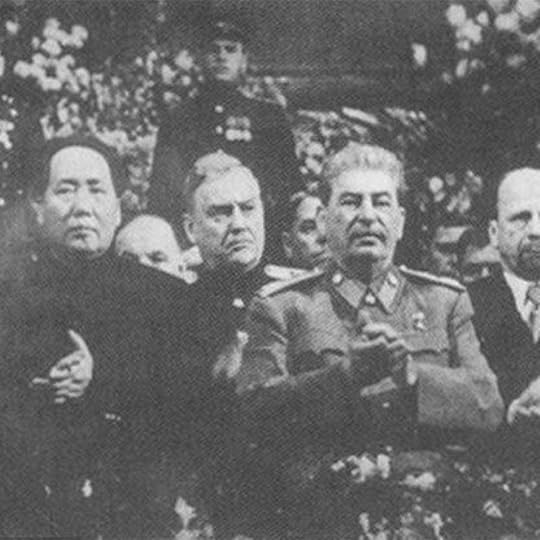Sino-Soviet Treaty
Beginning in early 1950, the newly-established People’s Republic of China (PRC) Chairman Mao Zedong and Premier Zhou En-lai met with Soviet Premier Joseph Stalin and Foreign Minister Andrei Vyshinsky in Moscow to discuss an alliance for mutual assistance and defense.
In the treaty, the USSR agreed to provide a $300 million and return control to the PRC of a major railroad and the Manchurian cities of Port Arthur (Lüshun Port) and Dairen (Dailian) which had been seized by Russian forces near the end of WWII.
The mutual defense section of the agreement primarily concerned any future aggression by Japan or “any other state” directly or indirectly associated with Japan.
Zhou En-lai declared that the linking of the two Communist nations created a force that was “impossible to defeat.”

Many U.S. commentators saw the treaty as proof that Communism was a monolithic movement directed primarily by the Kremlin. An article in the New York Times referred to the PRC as a Soviet “satellite.”
The post Sino-Soviet Treaty appeared first on Enemy in the Mirror.
Enemy in the Mirror
I began by posting events around the turn This website www.enemyinmirror.com explores the consciousness, diplomacy, emotion, prejudice and psychology of 20th Century America and her enemies in wartime.
I began by posting events around the turn of the 20th century as I was researching my first novel about the Pacific War. I continued through WWII for my second novel about the Battle of the Atlantic. Now I am beginning to look at the Cold War as I gather information for my next novel about the Korean War. ...more
- Mark Scott Smith's profile
- 7 followers



